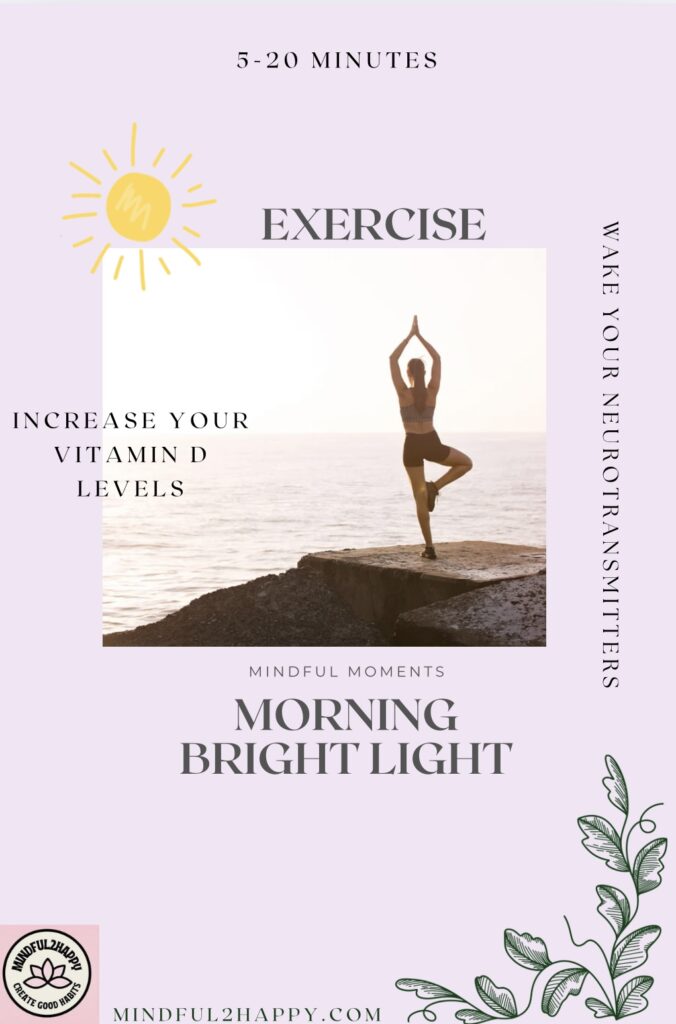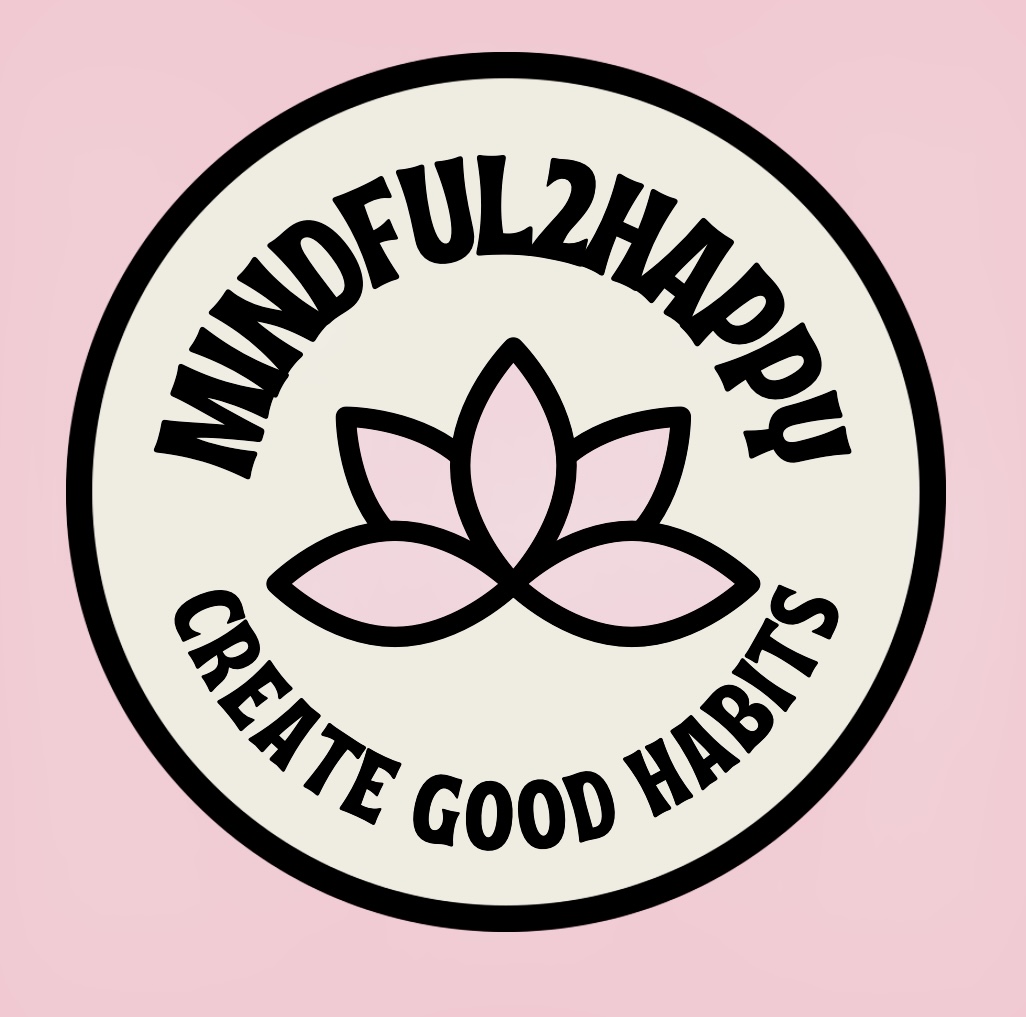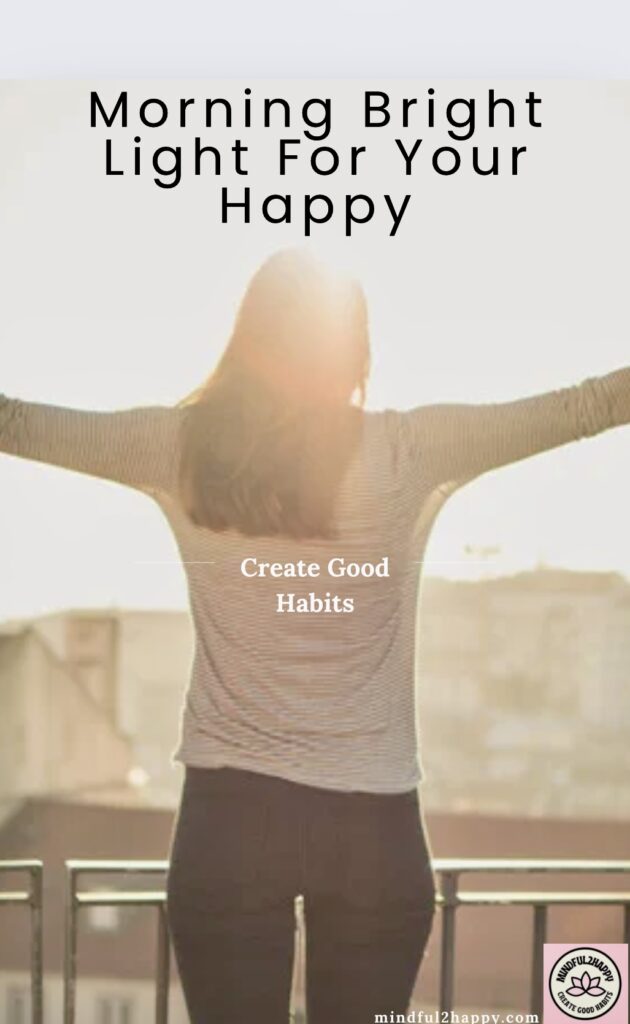REASONS TO ADD MORNING BRIGHT LIGHT TO YOUR MORNING ROUTINE:
There is a better chance of falling asleep easily and staying asleep throughout the night. Bright light that enters your eyelids, whether open or closed, tells your body’s natural clock (circadian rhythm) that it’s morning, therefore time to end melatonin (the sleep hormone) production. Your circadian rhythm synchronizes your body’s natural sleep-wake cycle, allowing for a consistent schedule.
Mood enhancement caused by the production of the neurotransmitter, serotonin (the happy hormone). Natural light increases serotonin levels, which can also leave you feeling more energized, productive, and mindful.
Increased alertness and cognitive function. Bright light sends a message to your brain that it’s time to wake up and start your day. The brain works best when a sufficient amount of time is given to wake up. Most people need about 30 minutes to 1 hour to completely wake up and function efficiently, while others may need more time. For best results, allow about an hour for your morning routine to prevent being rushed and to increase your odds of having a productive day that you can be proud of.
Lower stress levels. When waking up on a schedule and quickly exposing ourselves to morning bright light we become happier, more productive, and as a result we are generally less stressed. Sticking to a consistent routine that allows for time to get things done in a timely manner without being rushed, will in response allow for a consistent level of low stress. While the opposite type of scenario, will likely make you feel irritated and overall stressed out.
Increased Vitamin D production in the body from sun or UV exposure. According to the National Institutes of Health, 15 micrograms of Vitamin D each day is the recommended dietary allowance (RDA). Although, when I look at nutritional labels of food in my house such as for yogurt and cereal, it appears that 20 mcg is the suggested recommended daily value if you make the calculations (3 mcg labeled as 15% of the RDA and 4 mcg labeled as 20% of the RDA). Per NIH, levels lower than 15 mcg are recommended for infants and the elderly. Not only does Vitamin D make us happy, it also makes us healthy by helping the body absorb calcium. Those that don’t get enough of this vital vitamin from the sun or from food, are at risk for deformities and deterioration of the bone. Some studies suggest low levels of vitamin D as a possible link to different cancers such as prostate and breast. Cardiovascular disease, muscle conditions, and depression are among other concerns that have been linked to low levels of Vitamin D. Just as low levels of Vitamin D can harm your body, too high of levels can also be bad. Yes, you can have too much of a good thing, so do your best to keep track of your dietary intake of Vitamin D and your exposure to the sun. Natural sources other than through the sunshine, can be found in food such as; fatty fish (tuna or salmon), pork, egg yolks, and veggies (mushrooms, greens, and cauliflower) and fruits (mangoes, bananas, dried figs, prunes, raisins, dried apricots) that have been exposed to sunlight.
SO HOW MUCH NATURAL LIGHT IS ENOUGH?
Sunny mornings, at least 5 minutes.
Cloudy mornings, at least 10 minutes.
Rainy mornings, at least 20 minutes.
TIPS ON HOW TO SPEND YOUR TIME DURING BRIGHT LIGHT THERAPY:
- Sit in your outside happy spot and drink your morning tea or coffee.
- Eat breakfast outside.
- Morning excercise in nature. Take a mindful walk or nature hike. This is a good time to walk your dogs if you have any.
- Meditate or practice yoga outside. Work on simply being mindful of your surroundings. Listen to the sounds each morning brings. Smell the sweet smells of nature. Feel the grass. Look at the beauty presented to you each day.
- Journal or read. Work on gratitude.
- Garden or work on some outdoor chores, this way you can be productive while getting the necessary UV exposure.
ADDITIONAL TIPS TO CONSIDER FOR SUCCESS:
Limit screen time at night at least 2 hours before you want to be in bed, not the time you want to be sleeping. This allows for time to relax and fall asleep within a reasonable amount of time. Exposure to artificial light, even with blue light filters on your device can hault the melatonin production required to fall asleep. Any light that enters into your eye can tell your brain, that it’s still time to be active. Light in the morning stops production of melatonin by entering the eye lids where the circadian rhythm is housed, which stops hormone secretion.
Bright light therapy in the morning can be an effective treatment for SAD (seasonal affective disorder), a mood disorder caused by depression that occurs yearly when the days are short and natural UV light is limited. Research has shown that this type of therapy can cause a chemical change in the brain that can help improve depression, mood, and overall well being. Just sitting in front of a light box that emits at least 10,000 lux of full-spectrum light can be beneficial. Try to spend about 20–30 minutes in the morning near this light, about an arm’s length away. Important Note: Light boxes aren’t regulated, so it’s important to make sure you buy one that meets certain specifications, so be sure to spend some time researching products before buying one. If you don’t have a light box, just turn on the lights in your house when you wake to help your brain get the message that’s it’s morning.
Bright light therapy products: I have the Happy Light-verilux Brand, Model VT41. I just started to use mine since it’s winter and where I live sun is limited during this season. I get sad and tired driving to work in the dark and driving home in the dark, which doesn’t help with motivation and productivity. I put my Happy Light on my desk, which seems to help improve my productivity each morning at work. Try to remember that it’s not just the light therapy box that will improve your health, but a combination of good habits. The device I purchased is available on sites such as Amazon, see the link here Amazon.com: Verilux HappyLight Lumi Plus – Light Therapy Lamp with 10,000 Lux, UV-Free, LED Bright White Light with Adjustable Brightness, Countdown Timer, & Detachable Stand – Boost Mood, Sleep, and Focus : Health & Household. It’s a $40.00 device that I actually picked up from an Amazon return salvage store, which I paid $7.00. So if you can find a good deal go for it. This light therapy device is said have a brightness capacity of 10,000 lux and be UV-free. There is a timer for 15-60 minutes and a brightness adjustment on the device as an added feature. This model was given a 10.0 (5 star) rating on BuyersGuide.org (last updated January 2025). *IMPORTANT: Light therapy boxes are not regulated by the FDA for SAD treatment, while you can buy a light box without a prescription, a light therapy device should be used under the guidance of a health care provider and the manufacturer instructions should be followed.
Now that you know how light can act as the sun and wake the body, make it a good habit to end screen time at least 2 hours before the time you want to be sleeping. Even if you use a blue light filter, the device can still keep you up and therefore cut into your sleep time. Remember that we need to go to sleep early to rise early. I hope this post increases awareness on how important Vitamin D is for brain function and overall happiness. So, get started and find what works for you. Share this post with someone that can also benefit. Thanks for being a part of mindful2happy!!


